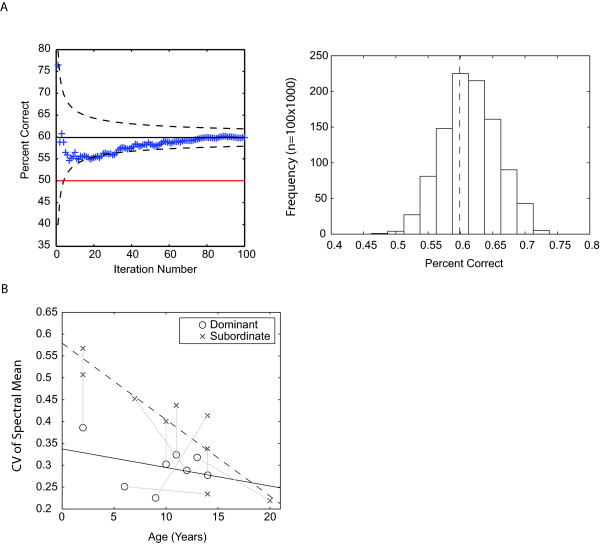Figure 4.
Dominance information in the giggle note. A. Left panel. Percent correct of calls classification according to the emitter's dominant/subordinate status as a function of iteration for cross-validation data. The cumulative average percent correct is plotted as a function of the iteration number. The solid red line shows chance and the dotted black lines the standard error of the estimate. Right panel. Distribution in the percent correct that is found by randomly assigning individuals to different groups. Although the discriminant function is significant and yields classification rates above chance, the permutations show that this successful classification could be solely due to individual differences and not to dominant/subordinate status. B. Coefficient of variation (CV) of the spectrum mean frequency calculated from all giggle notes for each individual. The CV is higher in subordinate animals than in dominant animals and decreases with age. The grey lines link the animals that were housed together and form the dyadic dominant/subordinate pairs.

